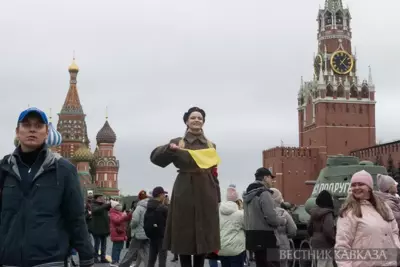The overall US trade deficit widened in the first nine months of 2019 to nearly $500bn (£388bn), a sign that the Trump administration’s approach to trade has so far done little to make a dent in the imbalance, The Independent writes in the article Trump promised to shrink the economic trade gap but it’s still growing. The trade deficit for both goods and services in the first three quarters of the year jumped by 5.4 per cent, to $481bn (£374bn), from the same period last year, according to data released by the Commerce Department. Total US exports fell by $7bn (£5.4bn) from the previous year, while imports grew by $17.8bn (£13bn).
After the Trump administration and China came to a temporary cease-fire last month in a conflict that has begun to weigh on the global economy, negotiators are still at work trying to reach an interim trade deal. Some worry that any agreement will fall short of the transformative changes the Trump administration originally sought and ultimately may not be worth the pain of US tariffs on China.
So far, the global trade war president Donald Trump has initiated has not had the effect he desires in terms of bolstering US manufacturing and exports. In fact, some business executives say they have been hurt by the uncertainty it has created.
Peter Bragdon, the executive vice president at Columbia Sportswear, said his company was accustomed to navigating bad public policy but “nobody is used to navigating public policy that is this horrible. It’s chaotic and incoherent”. He added: “It’s not surprising that investments have slowed in the United States because of the chaos."
Trump administration officials insist their negotiations will alter the terms of trade and have been in discussions with the Chinese to try to reach a deal in the coming weeks. China has been pressing the administration to roll back more tariffs as a condition of its officials’ travelling to the US to sign an agreement. Administration officials are considering the proposal but insist the final decision will hinge on further concessions by China and be made at the US president's discretion, according to people with knowledge of the deliberations.
Speaking at the opening of an import fair in Shanghai, President Xi Jinping of China broadly endorsed free trade principles and promised to welcome foreign investment to into his country while also denouncing the kind of unilateralism that the Trump administration has pursued. He did not mention when, where or even whether an agreement might be signed. Mr Trump has long pointed to the trade deficit as proof that unfair practices by China and other countries have been hurting US interests. But economists have argued that the figure is a poor metric for measuring American well-being or the health of the economy. They say the trade deficit continues to widen largely because the US is growing faster than other countries, leading to greater purchases of foreign products by Americans and slowing sales abroad.
Mr Trump previously announced that he had reached an interim trade deal with China that would strengthen intellectual property protections, open its financial markets and include large purchases of US agricultural products. In return, US officials said they agreed to cancel increases in tariffs planned for October and potentially for December, although not roll back existing tariffs on more than $360bn (£279bn) of Chinese products.
But officials have continued to spar over its terms. The cancellation of a summit of global leaders in Chile, where the US and China planned to sign their deal, has further thrown plans for the trade agreement into flux. Trump administration officials have pushed for a signing in the US, with Mr Trump publicly floating the possibility of signing the agriculture-heavy pact in the farm state of Iowa. “First, we’ll see if we get the deal,” he said. “And if we get the deal, the meeting place will come very easily. It’ll be someplace in the US”
But the Chinese have been reluctant to send Mr Xi to the US without a firm commitment for a deal that will not end up embarrassing them. “I doubt very much that Xi Jinping would agree to any meeting in the United States without the certainty of tariff reductions,” said Myron Brilliant, the executive vice president of the US Chamber of Commerce. “But I don’t think the administration will do that without some clarity on the enforceability of the agreement and progress of areas of concern in the intellectual property arena.”
In return for significant concessions, some Trump administration officials have been willing to roll back September tariffs on roughly $112bn (£86bn) of Chinese goods. These weigh more heavily on American consumers than the strategic Chinese industries that endured Mr Trump’s initial tariffs on $250 billion of Chinese products.
But not all advisers agree. Some officials view the tariffs as a powerful tool for ensuring China keeps its commitments, saying they should be rolled back only after China makes key reforms. They also see the tariffs as helping to ward off political criticism that Mr Trump is folding to China.
Trump administration officials insist the agreement will help rebalance a trading relationship in which the United States has too often been on the losing end. But critics say they fear that the deal’s provisions, which are not yet public, appear to fall short of accomplishing the administration’s ambitious goals and may not be worth the pain that tariffs have imposed on US businesses.
The two sides have mostly completed large parts of the stage-one agreement, including provisions pertaining to currency, automotive trade, financial services and large Chinese purchases of US agricultural goods like soybeans and pork. After signing the pact, China and the US will continue negotiating on more reforms, Mr Trump has said.
But the administration is still pressing Chinese officials to make more significant commitments to protect intellectual property, beyond tougher enforcement of patents and trademarks, those familiar with the discussions say. And the agreement also does not appear to touch on more difficult areas, including the role of state-owned enterprises, China’s restrictions on data flows and its huge subsidies to its companies.
While officials from both countries continue to haggle, the economic toll of the trade war is adding up. A survey by researchers at the Federal Reserve Bank of Atlanta estimated this week that trade tensions and tariffs subtracted roughly 40,000 new jobs a month from the economy in the first half of the year, a total that is set to grow. Last month, the International Monetary Fund estimated that the US trade war with China could cost the global economy around $700bn (£543bn) by 2020, a loss equivalent to the size of Switzerland’s entire economy. Organisations including the World Trade Organisation, the International Monetary Fund and the Federal Reserve have all warned that the trade war is weighing on investment and potentially weakening the economy.
“It is likely that some of the weakness in capital spending is a result of elevated uncertainty, for foreign growth generally but also specifically for trade developments,” Randall Quarles, an official at the Federal Reserve, said. Monthly figures released earlier this week also provided the first look at how September tariffs imposed on more than $100bn (£77bn) of Chinese goods affected trade.






